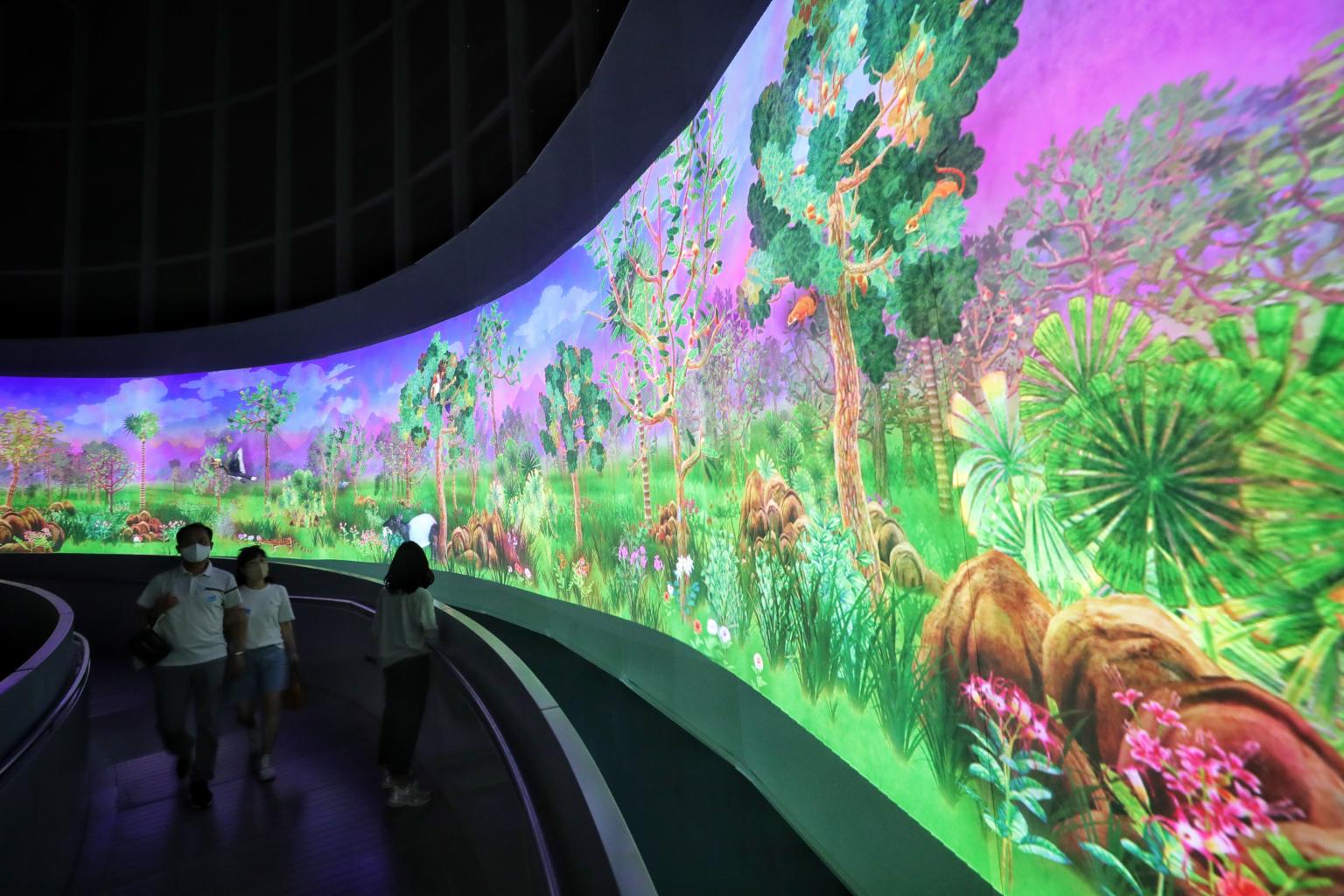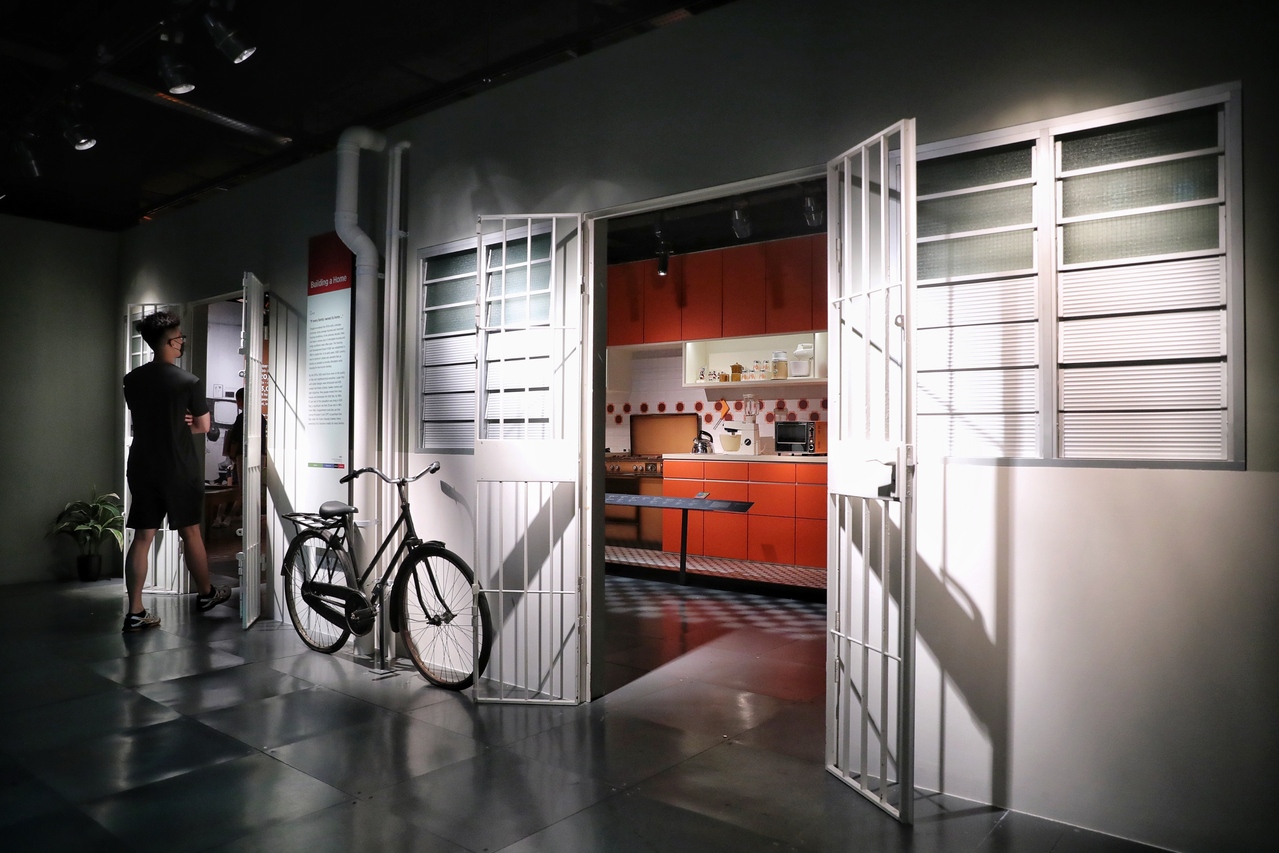National Museum's Singapore History Gallery slated for revamp in 2026
Sign up now: Get ST's newsletters delivered to your inbox
Follow topic:
SINGAPORE - The National Museum of Singapore's main permanent gallery and glass rotunda will get a content revamp in about three years.
The revamp of the 2,230 sq m Singapore History Gallery and the 700 sq m rotunda will likely be completed in phases, according to tender documents published by the National Heritage Board (NHB) seeking a master planning design consultant.
Work on the gallery, which last underwent a revamp between 2014 and 2015, is slated to begin in 2026, while the rotunda's refresh will start in 2025.
Currently, the rotunda - a 15m-tall dome that has an elevated passageway running through and around it - houses a permanent multimedia installation named Story Of The Forest, which opened in end-2016.
The gallery, meanwhile, showcases Singapore's history from the 13th century to the mid-2010s.
The upcoming revamp will offer "an opportunity to script a narrative that can be consistently presented across both galleries, centred on Singapore's history, the National Collection and shared, collective stories", said NHB in the documents, which laid out several objectives for the revamp.
These included updating content to engage with shifts in public sentiment and expectation on how Singapore history is presented, displaying new acquisitions, using multimedia technologies for storytelling and extending the galleries' narrative to "include a post-Covid-19 context".
The revamp's appointed master planner has to conduct on-site engagement sessions with museum staff and stakeholders - including the public - on exhibition content and curation.
When approached, the museum said more details would be announced later.
Dr Kevin Tan, former president of the Singapore Heritage Society and of the International Council on Monuments and Sites Singapore, said the last revamp of the history gallery in 2015 was done "to push a particular narrative of 50 great years of progress", in line with Singapore's golden jubilee.
"It is good to take a step back and move away from the triumphalist narrative that was pushed in 2015," he said.
Archaeologist John Miksic suggested that connectivity could be a central theme through which Singapore's history is told following the revamp.
"Singapore has depended on the strength of its links with other parts of the world since its founding 700 years ago," he said. "There is a fine balance to be created between highlighting what is uniquely Singaporean and what is imported from elsewhere."

Emeritus Professor Miksic, of the National University of Singapore, added that the revamp could take into account the other museums that NHB has in its stable, so that historical subjects, periods and artefacts that make up Singapore's history are well covered between the museums.
Heritage blogger and author Jerome Lim said that in recent years, more have grown to appreciate "Singapore's journey through history, its position even in the pre-colonial world, the roles - and maybe the exaggeration of roles in certain cases - that certain figures have played, and also the road to independence".
Understanding the public's general sentiments on Singapore's history and how it is presented will help the museum design a gallery that has greater reach among the public, said Mr Lim.

Dr Tan said that while widespread consultation is useful to identify gaps in the gallery's narrative, it should not define what that narrative is.
Referencing the museum's intention to include post-pandemic narratives in the refreshed history gallery, Dr Tan said: "I suppose the NHB won't want to let a good crisis go to waste, so it may well take the opportunity to include something heartwarming, which demonstrates national coherence and resilience."
Mr Lim said history is not just about the distant past, but also about the events in recent memory. He hopes the revamp will "focus on how the pandemic and its aftermath have affected and shaped the lives of ordinary Singaporeans".

